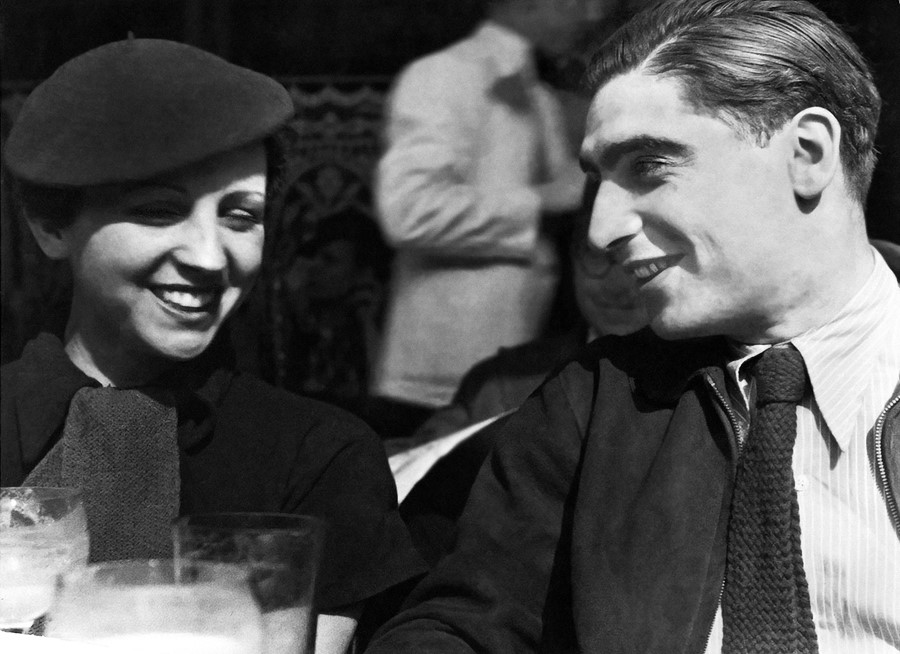Not only was Gerda Taro the first female photojournalist killed in action – she was also one half of the alias ‘Robert Capa’ with her partner, Endre Friedmann
Who? In August of 1937, a woman was crushed beneath the tracks of a tank as a convoy fled Brunete, a town on the outskirts of Madrid, during the Spanish Civil War. Life magazine reported the news as “the first woman photographer ever killed in action”. That pioneering photojournalist was Gerda Taro; she was just 26 years old.
Taro was born Gerda Pohorylle to a Jewish family in Germany in 1910. When she was 23 years old she was arrested for distributing anti-Nazi propaganda, and fled to Paris. It was here that she met fellow refugee Endre Friedmann, the handsome dark-haired Hungarian who would go on to be heralded as one of the greatest war photographers of all time; in Paris they discovered they could make more money selling their photos under the guise of a fictitious American photographer, and so the name Robert Capa was born. The pair worked seamlessly as one, and soon became lovers. They were frequently found at the cafés of Montparnasse; a picture by Fred Stein at the Café du Dôme immortalises them laughing together, with a happiness that was all too fleeting.

What? When the Spanish civil war broke out in 1936 they departed for the front together, where they lived in the company of writers such as Ernest Hemingway and George Orwell. There, they became important witnesses to the atrocities of the war; at first they both continued working as Capa, each swapping between a shared Rolleiflex and a Leica and publishing in French titles such as Vu, Regards and Ce Soir. While their work was shared, the legacy unfortunately would not be.
Capa proposed marriage, but Taro refused him, and as their joint name garnered fame she broke away, and established her own identity as Gerda Taro, allowing him to keep their previously shared pseudonym. Nicknamed “La Pequeña Rubia,” or the little blonde, by the Republican troops, she soon had a reputation all of her own. Her bravery saw her powerful images published in Life and Illustrated London News; dramatic shots of falling soldiers and bloody battlefields were matched by her human details of conflict, from refugees and stray dogs to shots of the bullet-worn streets. Taro also depicted women at war: one striking series focused on a group in Barcelona training for the militia. In one image, a woman is seen bent down on one knee in lace-up heels, a pistol cocked in her hand.
Capa would go on to be associated with many incredible women, but he never recovered from Taro’s death. Later he would famously proclaim that, “if your pictures aren’t good enough, you’re not close enough”. Taro, evidently, got too close.

Why? La Ragazza con la Leica, or The Girl with the Leica, tells the story of Taro’s life and love in a fictionalised account by Helena Janeczek. It is conveyed through three narrative voices: one of a surgeon, one of a friend, and one of her lover before Capa. Janeczek’s book made history just last week by winning Italy’s Premio Strega, making her only the 11th woman to win what critics refer to as the ‘Italian Booker’ in the prize’s 71-year history. This win sets Janeczek in good company, alongside writers such as Natalia Ginsberg and Elsa Morante, but more importantly it makes her the first woman to have won the prize in 15 years. Although it has yet to be translated into English, it’s only a matter of time before Janeczek’s novel reaches foreign shores.
“I had to learn to pull braveness from within me,” Janeczek recently noted in an interview. “[Taro] was born brave”. It was only in 2007, with the discovery of the “Mexican suitcase”, which contained thousands of negatives by Taro and Capa, that critics came to realize how much of Taro’s work had been wrongly accredited to her partner. Taro was overshadowed by her lover, both during and after her short life. Thanks to books such as Janeczek’s, the girl with the Leica is finally receiving the recognition she deserves.
La Ragazza con la Leica by Helena Janeczek is out now, published by Narratori Della Fenice.
